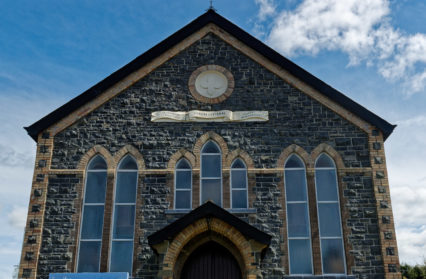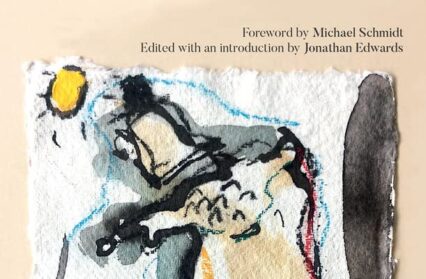Llanwrtyd Wells is an old spa town in Powys, situated mid-way between Builth Wells and Llandovery. Two years ago, through Lottery support and private donations, people from the town and surrounding area succeeded in saving the building which once housed the town’s Congregational Chapel. It’s now been turned into a Centre for Heritage and Arts, currently hosting an exhibition commemorating World War One. Lynne Brookes explains how the centre aims to bring history alive, and preserve it through arts projects which look to the future.
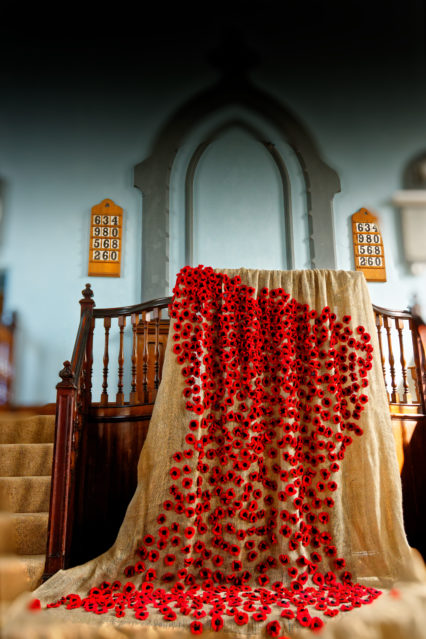
Situated as it is on the edge of the Cambrian Mountains, surrounded by the stunning scenery and peace of the mid Wales countryside one would think the small town of Llanwrtyd Wells has never been touched by the horrors of conflict and war. However unfortunately, like many villages in Wales, the young men of the town and surrounding areas left their homes to join the soldiers deployed to fight the First World War and many subsequently lost their lives.
To commemorate the centenary of the ending of this tragic conflict, Llanwrtyd and District Heritage and Arts Centre have a special exhibition that opened at the end of March and will run throughout the season.
With photographs depicting the horrors of the war, quotes from those who were there, and detailed information about the conflict together with tributes to local soldiers, the display also features a waterfall of poppies handmade by residents and friends of the town.
Situated in a small, separate room this atmospheric display provides the opportunity for visitors to learn more about the Great War, and spend time in quiet reflection and remember, not only those who gave their lives, but also those who survived only to spend their remaining years reliving the horrors they had endured.
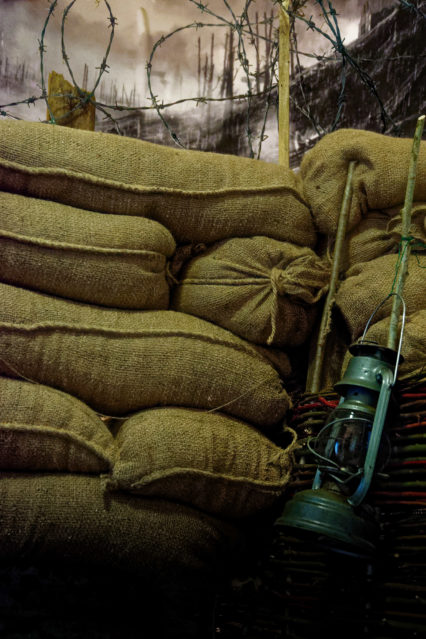
This display is just part of what is on offer at the Heritage and Arts Centre, where history, art and music go hand in hand, bringing together visitors and residents.
The building was originally a Congregational Chapel which opened in 1868, but was forced to close in 2010 due to dwindling attendance. In order to save the building an initial idea of creating a heritage centre was developed by a group of volunteers. Funded predominately by the Heritage Lottery Fund together with private donations, after months of planning and extensive but sensitive renovations it opened in 2016 and continues to be managed and manned by volunteers. Through static and interactive displays, together with recordings of long-time residents, one can follow the development of the town from its humble beginnings as a farming village originally called Y Bont through to its manifestation as an important spa town.
This was as a result of the discovery in 1732 by the Reverend Theophilus Evans that the foul smelling water found in a spring in the village was a cure for his scurvy. By the end of the 19th century development was such that the town had four spa hotels and warranted its own railway station, Llanwrtyd Wells, which was then adopted as the name for the town. By the end of the 19th century it was welcoming thousands of visitors each year.
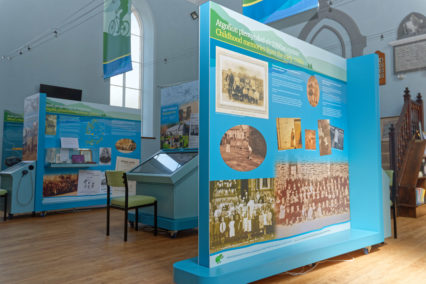
Twentieth century developments in medicine and the establishment of the NHS resulted in a decline in interest in spa remedies by the 1950s. A natural progression for the town, given its situation within the stunning countryside of mid Wales, was to become a focus for nature-related tourism – pony trekking, walking and cycling. Displays at the Centre detailsthis path through to the end of the 20th century and into the present day, when the town is once again on the national and international map.
The development of ‘extreme’ sporting events such as the annual Man versus Horse race, Bog Snorkelling, Mountain Bike Chariot Racing, and the biennial World Alternative Games has given the town – and, indeed, the Heritage and Arts Centre – something to shout about, generating column inches and hours of film. These events attract hundreds of visitors each year and the town’s reputation continues to grow.
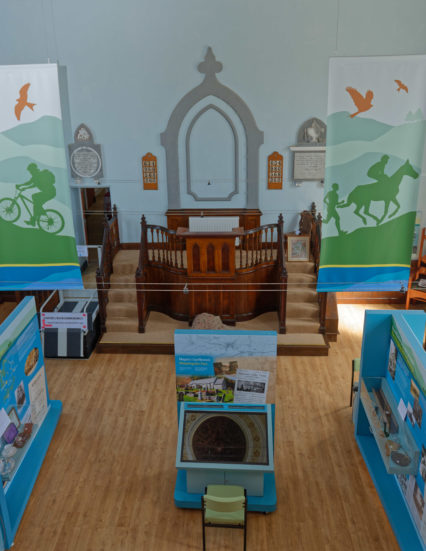
Moreover, the Centre proves that it is not impossible to promote such events side by side with the more traditional cultures of art and music. A small gallery displays work of local artists and sculptors, some of whom enjoy international recognition, with the exhibitions changing monthly throughout the season to encourage returning visitors. The reputation and success of these exhibitions is such that the gallery space is booked a year in advance.
A series of evening lectures spanning a variety of topics take place in the winter months, and throughout the year music recitals are being organized to give artists the opportunity to perform and experience the wonderful acoustics the former Chapel provides. To date these have included classical guitar recitals, chamber ensembles and vocal performances.
The Centre also hosts the History Resources Group which, over the past few years, has gathered together and continues to develop a wealth of historic material – stories, photographs, documents, artefacts and other memorabilia that was scattered amongst the local community. Now being conserved in one place it provides an invaluable resource for those wishing to trace their Welsh lineage, and enables current and future generations to learn about and research Llanwrtyd’s rich heritage.
The Llanwrtyd District Heritage and Arts Centre effectively brings the past into the present and details how the town and its residents are looking towards the future.
Open Thursday to Sunday (inclusive, plus Bank Holidays) 10am to 4pm with free admission under an access-for-all policy.


